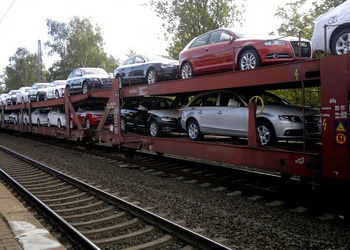Authorities say the Sinaloa Cartel hid a haul of 180 kilograms of methamphetamine inside the spare tires of new cars sent from Mexico to Canada, showcasing the innovative tactics drug traffickers are using to successfully skirt border checks.
Employees at four Ford dealerships in the Canadian province of Ontario first alerted authorities to the drugs, which were stashed in spare tires within the trunks of the vehicles. All the Fusion cars had been assembled at Ford’s plant in the Mexican city of Hermosillo, capital of the border state of Sonora, and then shipped to Canada by train.
Authorities subsequently launched an operation dubbed Project Sebright. Forces from across Canada carried out a series of raids and found methamphetamine in more than a dozen Ford cars as far as New Brunswick and Quebec. The drugs were ultimately valued at around $4 million.
Ontario Police Province (OPP) superintendent Bryan MacKillop said that Mexico’s Sinaloa Cartel was behind the drug shipments. “Ford was taken advantage of,” another Canadian official told local news media.
SEE ALSO: Sinaloa Cartel News and Profile
Authorities continued to search car shipments by rail from Mexico but no other drug stashes were discovered, leading MacKillop said to say that “this method of smuggling has been successfully disrupted.”
The smuggling of drugs into Canada through new vehicles, specifically Ford Fusion cars from the Hermosillo plant, is not a new tactic.
In April 2017, a marijuana haul worth $1 million was found in a load of Ford Fusion cars headed to Ohio. Ford employees alerted US officials, who opened an investigation, but the culprits behind the shipment were never found.
InSight Crime Analysis
Mexican cartels have consistently shown their ability to rapidly adapt to new opportunities to smuggle drugs, changing tactics to avoid detection and periodically returning to old trafficking schemes once they believe the heat is off.
As far back as 2017, Ford has said that the drugs were not being placed inside its vehicles while being manufactured in its Sonora plant. This indicates that the cars were likely tampered with once on their way to the US border.
The detection of two shipments of drugs transported in Ford cars just over 18 months apart suggests that the Sinaloa Cartel has access to rail freight heading to the US and is confident of avoiding detection.
SEE ALSO: 5 Clever Ways Mexico Cartels Move Drugs Across US Border
Indeed, the fact that staff in dealerships found the drugs points to a failure in the cartel’s logistics, not a successful coup by authorities.
Despite these finds, the way the Sinaloa Cartel gains access to these cars remains unknown. The group is unlikely to be deterred by a few losses and similar discoveries in newly manufactured cars would not be surprising.
Moving drugs into the United States aboard rail freight has long been a consistent, if not major smuggling tactic for Mexican criminal groups. In the past, trains carrying fruits and vegetables have been found to contain drug shipments, with packages often painted green to blend in among watermelons, limes or avocados.
Along the US-Mexico border are some of the world’s busiest rail crossings. New inspection facilities have been built at major transit points to more easily check the colossal amounts of freight, but it is unknown if these facilities are having any real effect on stopping the flow of drugs.

